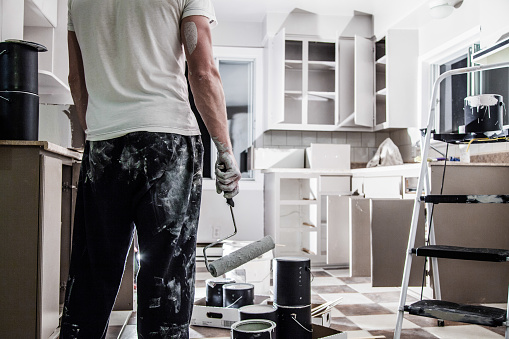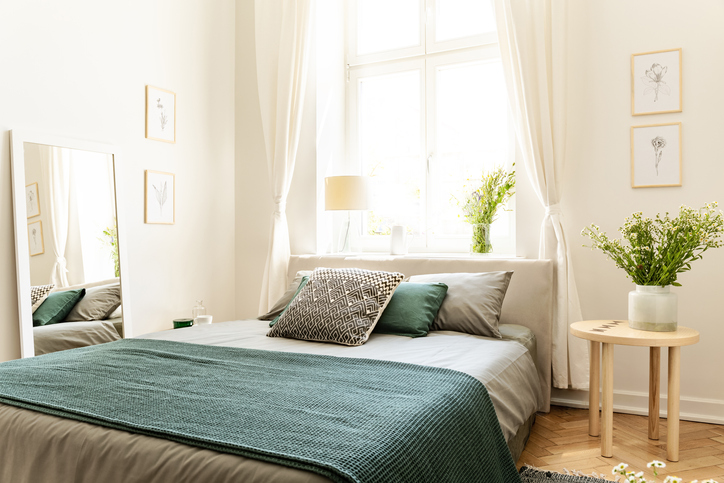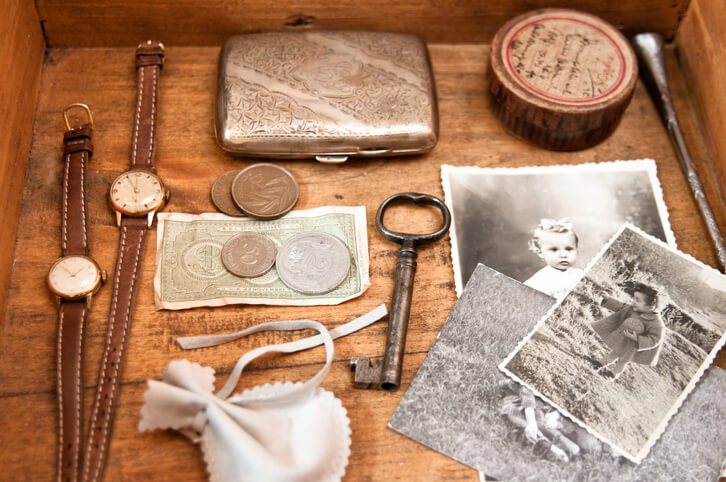Whether you’re remodeling your home to make it more comfortable for your imminent retirement, or to sell it and downsize, upgrading your home can be expensive. Instead of spending tens of thousands of dollars, finding ways to save money as you update your home means you’ll keep more cash in your pocket. Aside from looking for sales on your renovation supplies, here are seven sneaky ways to cut costs as you tackle remodeling projects in all the major rooms in your home.
1. Buy Discontinued Flooring for Small Spaces
New flooring may give a room an entirely new look, but it can be expensive. Installing new wood flooring costs around $8 to $10 per square foot, while installing new laminate costs about $5.50 per square foot.
If you’re updating flooring in a small area like a powder room, mudroom, or entrance, look for flooring that’s been discontinued, meaning it’s no longer being produced by the manufacturer. Discontinued flooring often gets discounted in retail stores (or online) to sell off quickly, so there may only be small quantities (suitable for small spaces) left in stock. If you are able to install it yourself, you can save even more.
First, measure your floor space carefully so you’ll know the exact square footage you’ll need. Then head to your local big box home improvement store, or your neighborhood flooring store. Check through the tile, vinyl, laminate, or hardwood flooring selection for deep discounts on the small amount of flooring you need. Keep in mind that it’s better to buy a bit extra (anywhere from 5% to 10%) to account for possible breakage or damage during installation.
2. Shop the Returned Paint
Painting is another easy way to give your home a fresh new look, but with paint prices ranging anywhere from $17 to $105 per gallon, your costs may add up quickly.
To save money, buy the returned paint. Also known as a “mistint,” this is paint that someone else ordered but no longer wants. Maybe there was a mixing error, or maybe the paint was returned because the buyer had second thoughts, but already-mixed paint gets sale priced, so it could cut your painting costs.
Keep in mind, though, that mistints or returned paint comes in limited quantities, so like discontinued flooring, this may work best for a small space or an accent wall in one room.
3. Repurpose Your Old Furniture Into New Built-Ins
Who says you have to go out and buy something new when you’re remodeling or renovating? You can save big bucks by thinking creatively about the furniture you already own, and how to use pieces in different ways and in different rooms.
For example, when remodeling a small kitchen, consider using an old low dresser frame with one level of drawers as the bench of a new space-saving corner banquette. Refinish and repurpose an old desk into a front hall table for your entryway. Or use the solid pine base of a round kitchen table to anchor an extension on your kitchen counter to create a built-in family breakfast area.
4. Choose Used Materials in Person and Online
You’ve heard of buying used furniture and appliances for your home, but did you know you can buy used building and renovation materials as well?
At Habitat for Humanity ReStores, you’ll see gently used (or even new and unused) lumber, windows, flooring, and other home renovation materials. This is where you’ll find good prices on used kitchen and bath cabinetry, sinks, toilets, and vanities, plus windows and interior doors. Often builders will donate the supplies they didn’t use on custom jobs or subdivisions — so not only will you find quality used materials, but you may also find new materials.
Another option is to look online at sites such as Green Demolitions, a web-based business that sells used kitchen cabinets (as well as display cabinets from former showrooms), often at 50% off the retail price. However, keep in mind that it’s harder to gauge the quality and condition of supplies purchased online than those you can check out for yourself in a brick and mortar store setting.
5. Don’t Make Costly Design Changes
When you’re looking for ways to save money on a home remodel, think carefully before making major design changes. Moving the plumbing, electrical, and/or gas lines can quickly lead to additional costs because of the added labor and supplies.
For example, if your kitchen currently has a functional layout that works well for workflow among the kitchen sink, fridge, and stove, don’t change it. Keeping the kitchen sink where it was originally avoids the additional cost of rerouting plumbing lines.
And if you do make a major design change, stick to it — especially if you’re using professionals to remodel your home. Any changes you make can increase your overall home renovation bill because it means more work for the pros and their team.
6. Repaint, Repurpose, Don’t Replace
Though you may feel tempted to rip out the old items in your home and replace them with brand new, modern items, this is often the most expensive option for a home remodel. Instead, look at repainting and repurposing what you have, especially for things that are good quality or in good condition, but simply outdated.
This works best for things like kitchen cabinetry and bathroom vanities. By painting what you have and updating the handles and door pulls, you can achieve a new look without a big bill.
7. Use Less Expensive Material That Looks Rich
If you want to add a luxury look to your home remodel without the high-end price tag, look for inexpensive materials that look rich. For example, select engineered wood instead of solid hardwood flooring. Or, instead of the most expensive carpet, choose a carpet in a middle-range price, plus an under pad for extra cushioning for a luxurious feel.
In the kitchen and bath, select painted lower-cost particleboard cupboards instead of solid wood cupboards, but accessorize them with upgraded pulls and knobs.
Finding sneaky ways to save on your home remodeling project doesn’t have to be difficult, but it does require vigilance and creativity. Keep an eye open for clearance bins and sales at your home improvement stores, and also keep an open mind about using furniture or decorating items in unconventional ways throughout your home. These tips can help you make a big impact without busting a small budget.







My brother has been planning to completely remodel his beach house after a couple of first ideas didn’t work out. I loved your suggestion of repurposing and repainting instead of completely replacing because my brother is on the fence about a lot of the decisions he’s made like furniture and decorations but is satisfied with others like flooring and wall tiles, so this may be a good way to be budget-conscious while still being satisfying. I’ll be sure to get a home remodeling contractor that he can discuss his plans with. Thank you for the article!
https://www.allphasebuildingconcepts.com/custom-homes/
Very good ideas but, know your limitations you may spend more having someone undo what you thought you could do.
We’re doing a garage conversion with bathroom and kitchen. We were quoted $270 for bathroom tile but went to Habitat Restores and found tile for $65. We can now get the backsplash we want for the kitchen.
I repainted back of my home and porch with discounted paint. The color is slightly different from original but it looks cleaner.
Now i will look in restore for replacing bathroom/bedroom doors
I was looking through some of your blog posts on this internet site and I think this website is really instructive! Continue putting up.
Thanks for your kind feedback, Guadalupe!